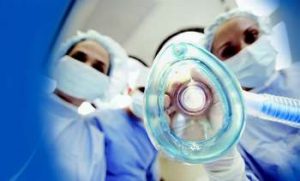Delegates at a recent Welch Allyn seminar heard about the trauma suffered by patients who become aware during surgery. Chris Pomfrett reports on a technology designed to improve the monitoring of awareness.

In around one in 500 procedures involving general anaesthesia, patients become aware during surgery. Experiencing the full pain of the procedure, they may also be unable to communicate what is happening to them. As a result, patients are likely to suffer post-traumatic stress disorder and hospitals may face litigation because of a failure to deliver adequate levels of effective anaesthesia to the patient.
Knowing the correct depth of anaesthesia is a subjective skill developed by practitioners. But tools are now available to further assist the anaesthetist by providing an objective monitor of anaesthetic depth. Bispectral Index (BIS) is a proprietary monitoring technology developed by Aspect Medical Systems and licensed to other manufacturers. It has been in continuous development since 1987, attaining US Food and Drug Administration (FDA) clearance in 1996 and approval as an awareness monitor in 2003. A systematic review of BIS’s performance in many hundreds of scientific articles is currently being undertaken by the Cochrane Collaboration.
The technology works by collecting high quality data from brain activity, performing advanced signal analysis on that data and presenting a summary of the brain’s activity on a scale of 0 to 100 in real time with a 15-second or 30-second smoothed trend display. The index of cerebral cortical activity is primarily obtained from frequency analysis of the electroencephalograph (EEG), separated from but using some additional information originating from the electromyogram (EMG), the electrical activity of muscles in the forehead under control of the brain stem. One analytical technique is bispectral analysis, which forms an important part of the bispectral index. BIS analysis compares the processed signals to a table of previous recordings from known states of anaesthesia related to the ability to respond to a verbal command.
A BIS of around 100 indicates an awake, vigilant patient who will respond to a normal voice. BIS levels ranging from 90 to 70 indicate increasing levels of moderate sedation and an inattentive patient who will only respond to loud commands or mild prodding, shaking or painful stimuli. Below BIS 70 there is a low probability of explicit recall. BIS levels of 60 to 40 indicate a patient with a low probability of consciousness. BIS levels lower than 40 correspond to deep hypnotic anaesthesia, with burst suppression of the EEG seen with some anaesthetic agents. BIS 0 equates to no measurable EEG activity.
Other approaches have used variables derived from the EEG to assess the depth of anaesthesia. Only BIS integrates different processed variables and compares them against a database of profiles obtained during prior anaesthesia. BIS has been compared with functional imaging techniques and has been shown to reflect the percentage reduction in brain metabolism during sedation and surgical planes of anaesthesia.
In order to collect high quality EEG, special electrodes must be used with the system. The electrodes need to have consistently low impedances and be accurately matched to the monitoring technology. In addition, they should be easy to apply in a clinical environment, minimising the risk of cross-infection. Aspect Medical Systems has developed single-use sensor technology that reduces artefacts (XP) and is customised for operating room (Quatro), intensive care (Extend) and infant (Paediatric) applications. There is also the option of using a semi-reusable system (SRS) where only the sensor pads are changed with the electrical connection between the backing strip and cable good for 100 applications. The sensor connects to a digital signal converter (DSC) which means that an appropriately long connection may be used to connect the patient to the BIS monitor.
BIS monitors are available stand-alone (XP), in modules provided by anaesthetic equipment manufactures, or as an electronic board for developers (BIS engine). A further development is BISx the BIS technology is held in a box kept near to the patient’s head which connects to a BIS aware anaesthetic monitoring system which changes its display to show BIS when connected via the BISx socket.
Another EEG-based consciousness monitor that is available is the Entropy from Datex. It also uses Aspect’s Sensor technology connected to a monitoring system with a different type of EEG and EMG analysis. Entropy also presents a 0 to 100 scale and may well prove to be another useful tool.
But it is not only in monitoring light awareness that these tools may be needed. It has also been suggested that excessively high levels of anaesthesia can potentially lead to adverse clinical outcomes. If such deep anaesthesia is proven to be a problem, maintenance of appropriate anaesthetic depth with an objective monitor like BIS will become even more important. The question now is not if, but when, some form of depth of anaesthesia monitoring will become part of a new standard of care.
